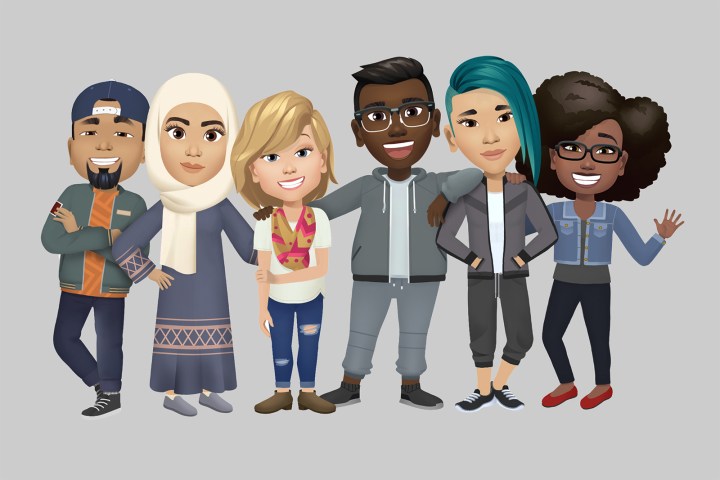
Facebook is preparing to trade the yellow smiley for emojis that actually look like you. Beginning Monday, June 3, Facebook Avatars allows users to create their cartoon lookalike — not unlike a Bitmoji — for using in comments, messages, and more. The feature is initially rolling out to users in Australia, but the social media network aims to roll out the feature to the rest of the user base by early 2020.
Facebook Avatars use a user-generated character to generate stickers for comments and messages, as well as potentially becoming part of post reactions along with the standard emojis. Facebook says the avatars are designed to be more realistic than cute, including a wide range of skin and hair colors as well as different clothing options from ripped jeans to a hijab.
Once the feature rolls out, users will be able to create their virtual lookalike inside the comments options or in Messenger. In comments, the process starts by tapping the emoji icon and then navigating the Avatar sticker pack. From there, users can customize the characteristics and clothing of the avatar.
Facebook has been toying with the idea of custom avatars for years; more than a year ago, the social media company shared software that generated an avatar from a photo. That software still isn’t yet making its way to users, however, with the new tool sticking with the standard build-your-own option. While Facebook says the avatars are designed to look more realistic, the feature doesn’t have the same level of reality as the company’s virtual reality avatar software shared earlier this year.
While generating an avatar from an image is a unique concept, designing an avatar for custom stickers on social media is anything but unique. Facebook Avatars channels the popular Bitmoji, now owned by Snapchat, which are also popular outside the social media network. While Facebook’s built-in avatar generator doesn’t appear to be taking aim at the stand-alone Bitmoji app, the feature, like Stories, feels similar enough for Snapchat to cry copycat. (To be fair, Bitstrips were integrated into Facebook in 2012 before Snapchat bought the company in 2016.)
While the feature launched in Australia, Facebook didn’t share details on an exact timeline of the rollout outside a general early 2020 prediction.





